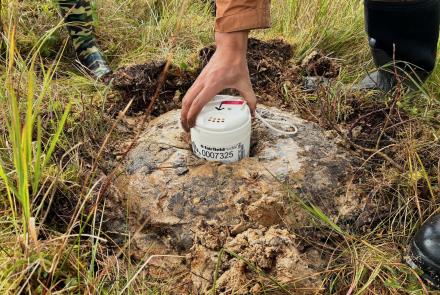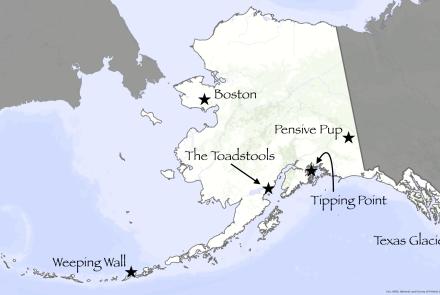Results of the Nasturtium Project
There is a lot of variability in temperature across the state of Alaska. Such things as the date of the first frost (especially if it's a clear-sky radiation frost) vary not only from north to south, but from hillside to valley bottom, from the north to south slope of hills, and even within a single yard.
About a year ago I suggested a project to collect information on frost variability by recording the dates that nasturtiums across the state were damaged and killed by frost. Although the response was hardly overwhelming (nine people, plus a number of oral reports from Fairbanks), a few interesting patterns did emerge.
The first reported frost was August 29 in Fairbanks. I suspect this was the night of August 29, as most of the oral reports agreed with what happened in my own garden, where the nasturtiums went from flourishing to black slime early the morning of the 30th. The official airport temperature that morning just barely reached freezing, though North Pole, 25 kilometers (16 miles) to the southeast, recorded 23 degrees F (- 5 degrees C). As far as I have been able to tell, most of the nasturtiums in Fairbanks were killed that morning, and any survivors collapsed the morning of the 31st, when the official temperature dipped into the upper 20s.
The more severe cold of the 31st reached the south central part of the state, where nasturtiums were killed at mile 80 on the Parks Highway and nipped in Anchorage and Cooper Landing. Local variability was again extreme: the official Anchorage temperature (from International Airport) was a warm 39 degrees F (4 degrees C) while that at Cooper Landing was 23 degrees F (-5 degrees C). Two other Anchorage gardens survived this episode, which evidently produced only rare pockets of frost in Anchorage. On September 14 all of the Anchorage and Cooper Landing reports had killing frost, with official temperatures of 30 degrees F (-1 degree C) at Cooper Landing. It appears that the official temperature at Cooper Landing may be recorded in a frost hollow, while that at the Anchorage International Airport is certainly protected from frost by the nearby waters of Cook Inlet.
Gustavus, near the mouth of Glacier Bay, was the next locality to report nasturtium frosts. There, a killing frost (official temperature 26 degrees F or -3 degrees C) struck October 7, well over a month after the first killing frost in Fairbanks.
The latest frosts reported were from the Kenai Peninsula. At Seward, the third frost (and the first to show damage to nasturtiums) was October 25, when the official minimum temperature was 33 degrees F, about half a degree C. A very interesting report from Homer indicated that two days later, with an official minimum temperature of 25 degrees F, plants in two boxes well away from the house were killed, while nasturtiums planted directly in the ground nearer the house were nipped. The next reported frost at both locations was October 30. The official temperature was 27 degrees F (-3 degrees C) at Seward, where nasturtiums were killed. The same morning at Homer (official minimum 19 degrees F or -7 degrees C), plants in two additional boxes near a gully were killed, as were those in a planter adjacent to the house. The flowers in the soil bed were damaged again, while a soil bed on the northeast side of the house had no damage. Nasturtiums in the two soil beds at Homer were finally killed November 1.
One point which is quite clear is that the frost dates from official recording stations may differ greatly from those at nearby locations. It would be nice to have a denser net of reports to confirm this.
Second, the use of planters may affect frost damage. Boxes and planters are widely used to increase soil temperature in Alaska, but the Homer report suggests that nasturtiums planted directly into soil survived longer than those in otherwise comparable boxes. After all, the advantage of a box over the ground is that the soil can warm up faster, and by the same reasoning, the ground cools down more slowly on a frosty night.
Finally, reports from both Homer and the Parks Highway suggest that flowers survived longest when planted directly against a house foundation, even on the north side. Nasturtium freezing is generally due to loss of heat by radiation to a cold sky, and radiation received from the warm foundation wall will, like that from warm soil, help keep the flowers warm.



